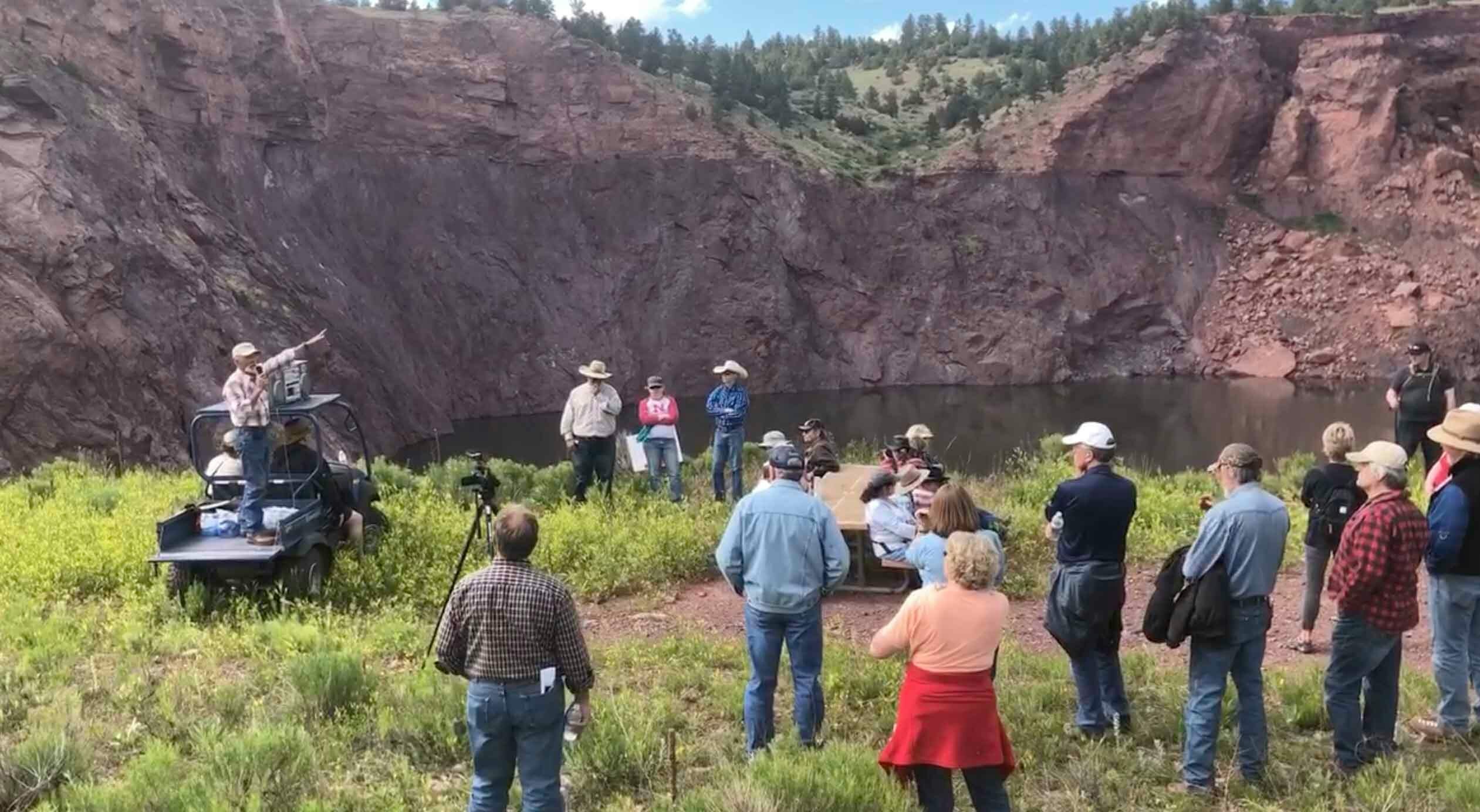Wyoming has one of the world’s oldest red ocher mines near the former town of Sunrise in Platte County. Next to that site is a lesser-known area of importance, the Sutton archaeological site.
It has some extraordinarily large ceremonial circles whose use is presently unknown, but could be significant.
The 46-acre site was donated to the state after its owner, John P. Sutton, died. It could become a protected site under Wyoming law, complete with security fence, remote communication and alarm system, and signage under Senate File 58.
The Senate Travel, Recreation, Wildlife & Cultural Resources Committee unanimously voted to advance the bill out of committee Thursday.
The site is 46 acres located northeast of Guernsey State Park. Securing it would cost an estimated $194,306, according to a fiscal note attached to the bill. The bulk of that is for a fence, which would cost $159,642. A remote communication and alarm system would cost around $16,000, while signs would be about $1,000.
Department of State Parks and Cultural Resources Department Director Darin Westby told lawmakers his department already has enough money to cover the expenditure.
Looting Has Been An Issue
Sutton had been aware of some looting going on at the site and was unable to protect it by himself.
He approached the state before his death to see if Wyoming wants to preserve the location for future generations.
During a due diligence process that Wyoming requires for all properties donated to the state, the looting issue is something that became readily apparent, Westby said.
The due diligence committee discussed developing a full-blown historic site with the donated land, but ultimately decided to put up a fence for now, securing it for future generations and further study.
Part of that study will be to help determine if the site is worthy of a more involved treatment.
Plenty Of Potential
State Archaeologist Spencer Pelton was an active part of the due diligence process, Westby said.
Input from Native American groups, including Eastern Shoshone, Northern Arapaho and the signatory tribes to the Fort Laramie Treaty of 1868 was sought out as well.
The Sutton site is not nearly as old as the Powars II site, but it is still hundreds of years old, and has extraordinarily large ceremonial circles that Pelton told Cowboy State Daily could have been used for dancing. The floor of one circle has been entirely painted with red ocher.
“If you were dancing inside the circle, you probably would have been covered in red paint at the end of it,” Pelton said. “It would have been an interesting scene.”
The Powars II site is the only known red ocher quarry in North America so far north of southern Mexico and one of just five such known quarries in the Americas. With its proximity to the mine, Westby suggested the site could one day be a candidate for a World Heritage Site, depending on what researchers find there.
“We want it to be preserved for the rest of time,” he said. “We want you to secure it and not necessarily operate it, but just make sure it will be there for future generations to study.”
Fashionable Sunscreen
Ocher is a substance that comes in many different colors and was found in a variety of Paleoindian societies. These mines attracted many people seeking materials for decorative, ceremonial and practical purposes.
Red ocher, or hematite, has been found in graves, caches, campsites, hide-working implements and kill sites. It was used to make jewelry and even sunscreen.
The red ocher mine near the Sutton site was initially discovered in 1939-40 by Wayne Powars, who was a resident of the former city of Sunrise. He didn’t report his discovery, however, until the mine was set to be razed as part of reclamation efforts at nearby Colorado Fuel and Iron Mine. Until then, not even the Department of Environmental Quality was aware of the mine.
Famed University of Wyoming archaeologist George Frison began researching the site the same year Powars revealed its existence.
Frison died in 2020, but his research was carried forward by Pelton and a team of University of Wyoming researchers. They have confirmed many of Frison’s theories, including that it’s one of the oldest such mines on the continent.
An Unexpected Discovery
A number of items have been found at the Powars II site, including well-preserved animal bones and antlers, tools and beads.
But there was a unique find as well. Many pointed projectiles, completely different from the more typical Clovis points that have been associated with Paleoindian cultures in the area, were found.
They’re being called Sunrise points, and the people who used the site are being referred to as the “Sunrise people.”
Stones used to make the projectile points came from numerous locations, as far as away as Edwards Plateau in Texas, according to researchers.
That suggests the site had great importance in the ancient world, and presents a likely avenue of important future research.
If approved by the Wyoming Legislature, the Sutton site would become the state’s third significant archaeological site, joining Legend Rock State Historic site west of Thermopolis just outside of Hotspring State Park and Medicine Lodge State Archaeological site, which is between Thermopolis and Grey Bull.
Learn More
Not much is known about the Sutton site yet, but Wyoming State Archaeologist Spencer Pelton and University of Wyoming Researchers have authored a paper about the Powars II site that is adjacent to it.
The Powars II site is privately owned and is protected by the Sunrise Historic and Prehistoric Preservation Society. While closed to the public, there are occasional tours. The group may be followed on Facebook.





